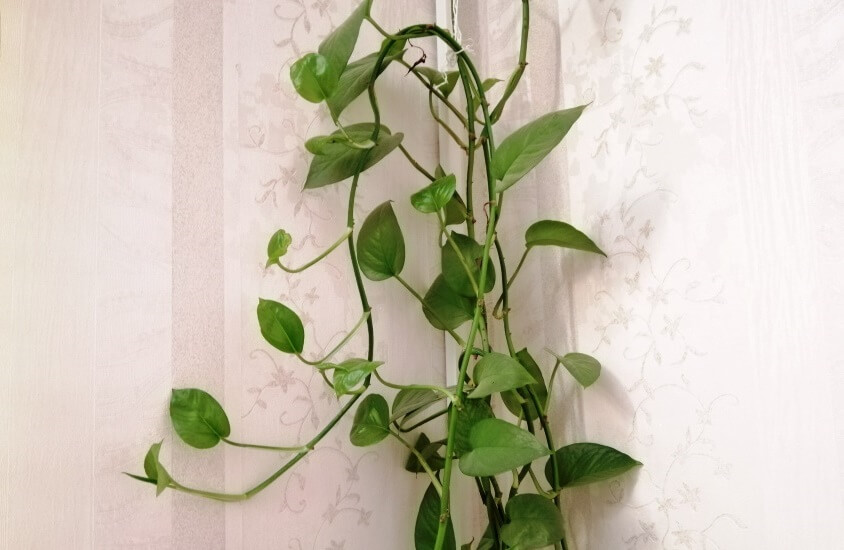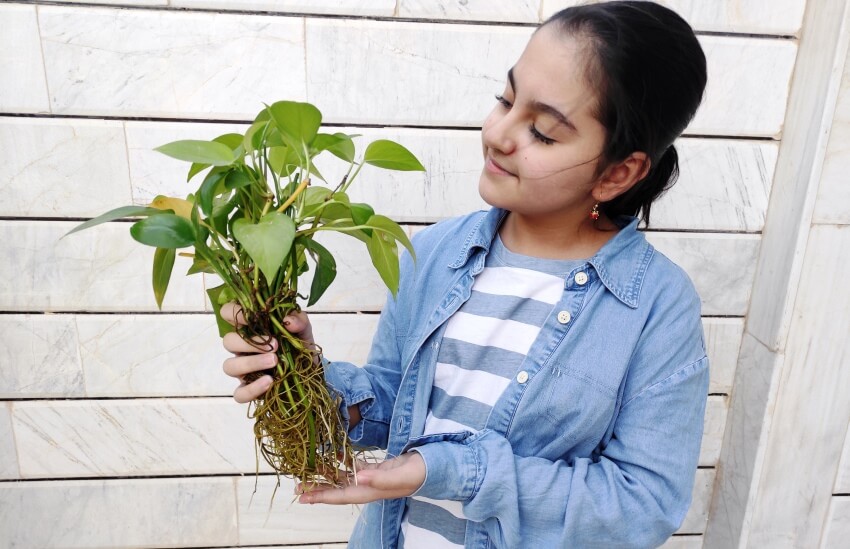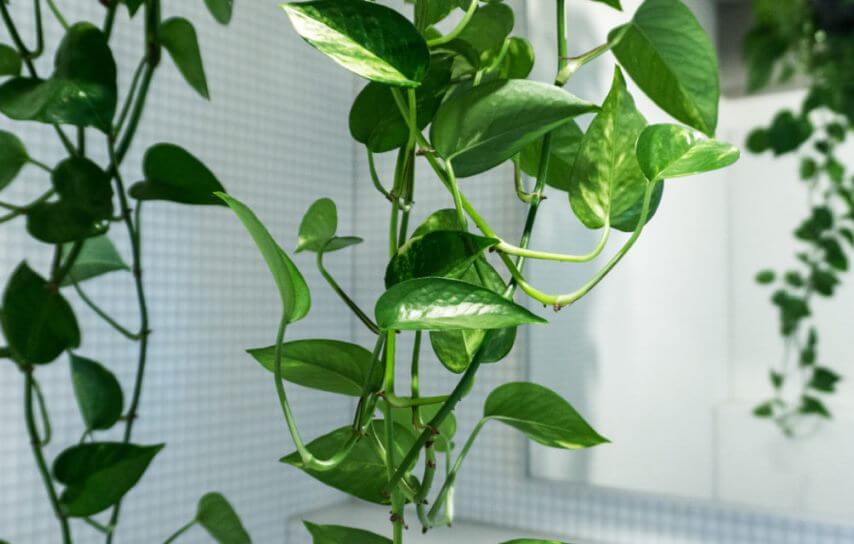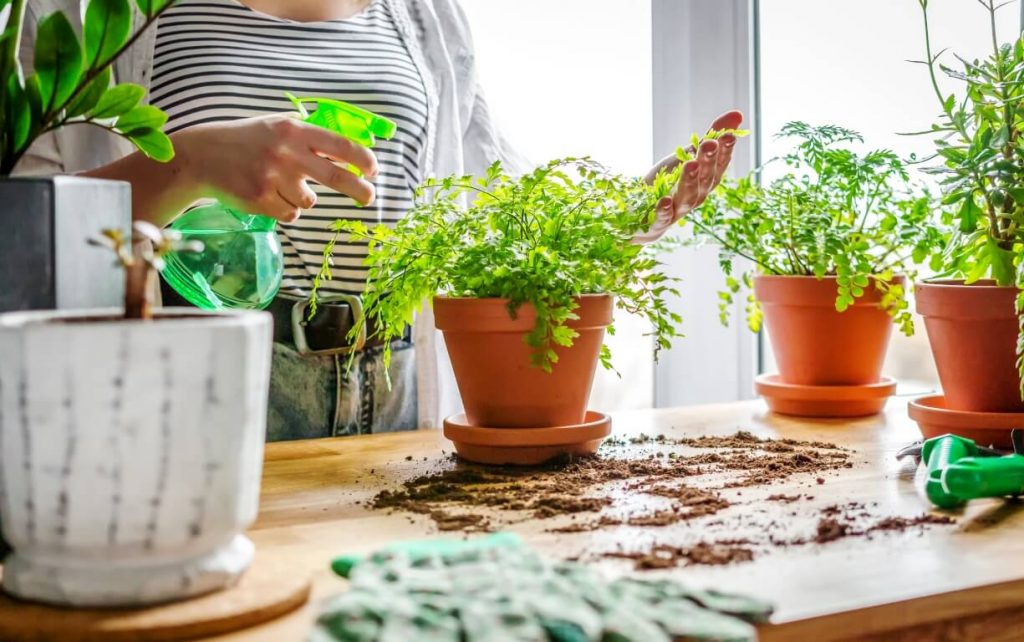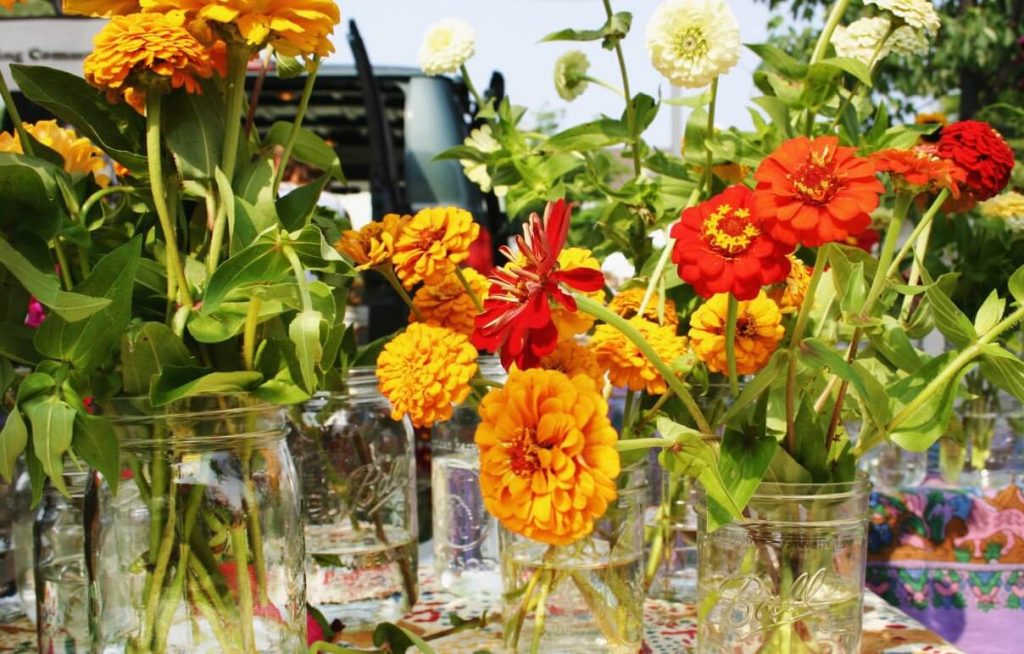Pothos, or Epipremnum aureum plant, has a well-deserved reputation as the easiest houseplant to keep indoors. Golden pothos, hunter’s cloak, ivy arum, money plant, and taro vine are frequent names for pothos. Because it’s very tough to destroy and survives even when kept in the dark, this plant is also known as devil’s ivy. This easy, popular plant has just one disadvantage. It is somehow a posineous houseplant. Epipremnum aureum is poisonous to kids, dogs, and cats.
Epipremnum aureum plant Description
Epipremnum aureum is a genus containing eight species of evergreen vines native to the tropical regions around the Pacific Ocean and Southeast Asia. Pothos can grow to be enormous in tropical forests, climbing and clambering all over the place. When grown in their natural habitat, the plants use their specialized sticky aerial roots to ascend to considerable heights (60 feet) in trees. However, the ones we grow in the house are milder varieties.
Pothos leaves are simple, ovate to lanceolate, and come in green or variegated varieties in both juvenile and adult forms. Long petioles envelop the stem at the base of the leaves, which exhibit strong parallel-convergent veins. A single green, yellow, or purple spathe forms the inflorescence, with the spadix being shorter than the spathe. To make tubes, the spathe’s edges do not overlap.
The plants rarely flower as indoor plants unless they have grown significantly, which is unlikely unless they are grown outside. If your pothos becomes too leggy indoors or outdoors, trim it to keep the shape and length in control. Epipremnum aureum is a vigorous, fast-growing, low-maintenance plant that is perfect for offices or new homes where formaldehyde from carpet, plywood, or other materials may be a problem.
Since this pothos is poisonous to cats, dogs, and children,you should make sure that neither your children nor your pets, particularly cats, ingest or taste its leaves. Epipremnum aureum contains a toxin that, although non-lethal, causes a burning sensation in the mouth.
Pothos plant needs
We need to understand the factors that affect Epipremnum aureum in order to keep it healthy. These specifications will be discussed in the following paragraphs:
Light
Moderate to bright light or fluorescent light.
Temperature
Average room temperature (60–80°F/16–27°C).
Fertilizer
From spring to fall, feed your houseplants every two weeks with a well-balanced houseplant meal. Feed once a month in the winter.
Water
Allow soil to dry to within 1 in (2.5 cm) of the surface between waterings. Pothos tolerates dryness better than overwatering.
Soil
Epipremnum aureum plant thrives in any excellent sterile potting soil that drains properly.
Repotting
Repot annually in spring, shifting plant to a slightly larger pot. Control the size of larger plants by clipping off up to a third of the vines along with some of the roots, and do not increase container size.
Longevity
Ten years or more, indefinitely when propagated from rooted stem tip cuttings.
Propagation
Wait for a new shoot to grow from the plant’s base after cutting down a long stem near the soil when the new branch reaches a length of 4 inches (10 cm), root. Stem tips can also be rooted; however, they take longer to do so.
Selections
Inexpensive Epipremnum aureum plants with leaves marbled with yellow or white are widely available. ‘Neon’ has nearly chartreuse leaves, while ‘Marble Queen’ is so heavily variegated with white that green is the secondary leaf color. Plants may be labeled with obsolete botanical names, including Pothos aureus or Scindapus aureus.
Tips for displaying
Display the plant on a tall piece of furniture or filing cabinet to take advantage of the way the pothos stems drape downward.
Troubleshooting
Each plant has its own set of ailments and treatments. We need to learn everything we can about them so that we can keep our indoor plants healthy. We’ll go through some of these diseases and their treatments in the following paragraphs.
1) Leaves are primarily green and have lost their variegation
Cause: Too little light; weakly variegated variety.
Solution: Move the Epipremnum aureum plant to a brighter spot. Be patient as well, since new leaves will appear. They typically start off green and develop variegation as they grow older.
2) leaves turn yellow and fall to the ground
Cause: Too much water; transplant trauma.
Solution: A few weeks after repotting, pothos often sheds a few leaves. Continued yellowing of leaves is usually due to excessive water or inadequate pruning. Stems allowed to grow more than 4 ft/1.2 m long often shed most of their leaves. Check drainage holes to make sure they are free of debris, and water the plant less frequently.
3) Brown spots on leaves surrounded by yellow halos
Cause: Bacterial leaf spot.
Solution: Clip off afflicted leaves or entire branches with a lot of spotted leaves as a remedy. Keep leaves dry when watering the plant.
4) Yellow or wilted leaves; soft mushy stems
Cause: Root rot is caused by a variety of soil-borne fungus.
solution: If possible, propagate a few stem tip cuttings, then discard the plant and soil. Before starting a new houseplant, make sure the container is completely clean.
5) White, cottony masses on stems or leaf undersides
Cause: Mealybugs
solution: Pothos, which is typically pest-free, is only infested on rare occasions by this bug. Mealybugs can be removed with a cotton swab dipped in alcohol. Repeat after one week if necessary.
Epipremnum aureum plant poisoning mechanism
Epipremnum aureum plant species, like other members of the Araceae family, have oxalate crystals in their stems and leaves. The calcium oxalate crystals (raphides) are stored in idioblasts, which are specialized cells. Raphides are long needle-like crystals clumped together in these specialized cells and when kids, cats, or dogs chew the plant tissue, the crystals are extruded into their mouth and mucous membranes. Once entrenched in the mouth’s mucous membranes, the raphides induce severe discomfort and inflammation. There is evidence that oxalate crystals operate as a conduit for additional harmful substances from the plant such as prostaglandins, histamine, and proteolytic enzymes into the body, mediating the inflammatory response.
Pothos cuttings
Clinical Symptoms of Pothos
Kids, dogs, and cats who chew on the leaves and stems of Epipremnum aureum plant may salivate excessively and vomit due to the contact between the calcium oxalate crystals in the plant and their oral mucous membranes. Children and animals may thus be unable to feed for several days due to the unpleasant swelling in their mouth. If plant liquids come in contact with the eyes, they can cause severe conjunctivitis.
Treatment
Treatment is rarely required unless salivation and vomiting are significant. In severe cases of stomatitis, anti-inflammatory medication may be necessary. Plants like pothos that might be consumed by kids and animals should be removed or placed out of reach.
If you interested in pothos plants, you can purchase them from Amazon web site.


